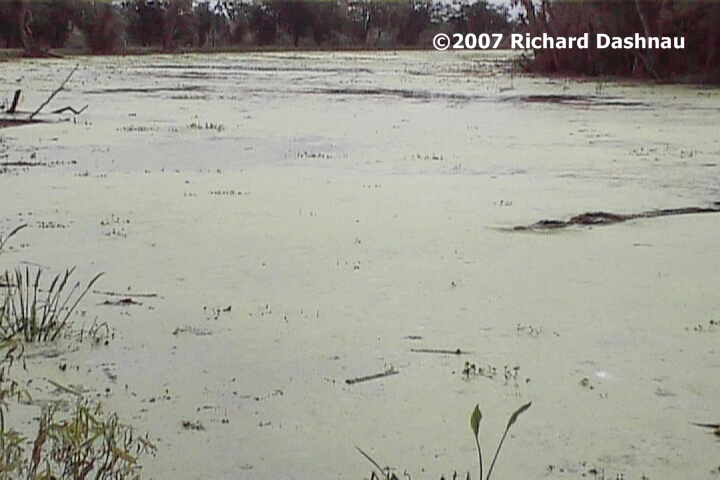 -
-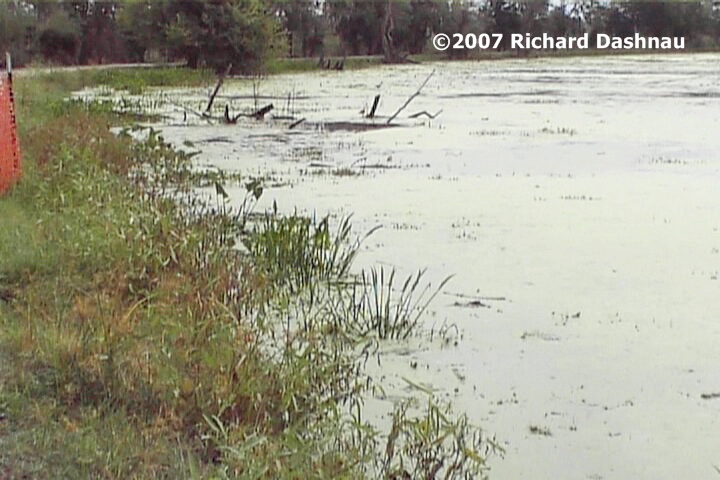 -
-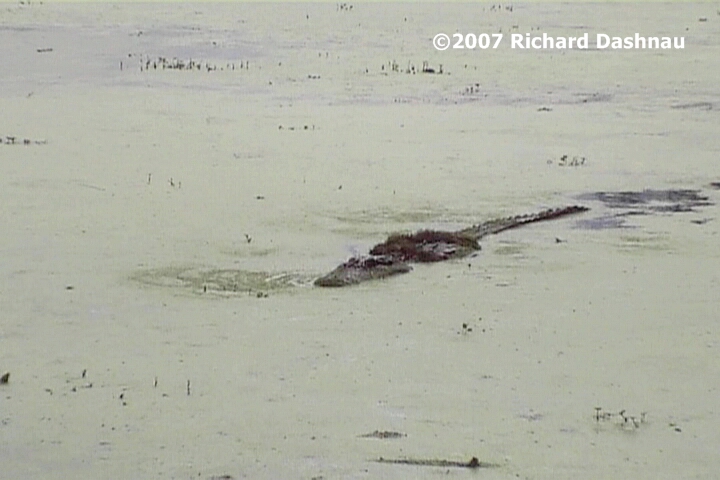
Alligators,
although they are ectothermic and also equipped with a small
brain,
exhibit
a surprising diversity in their responses to their environment
and to
each
other. They are for more
complex than mere animated logs or 12-foot-long
eating machines. This
group of pages show some of what I've been able to
see in the years I've been volunteering (September of 2001
thru March of 2022) at Brazos Bend State
Park.
The
mother
swam out to meet the larger alligator. It moved slowly, but with
intent.
As it neared the larger alligator, the larger one lowered its
back. It
raised the tip of its snout slightly.
This was all captured on video, and is in the
11
minute video
clip(mp4).
---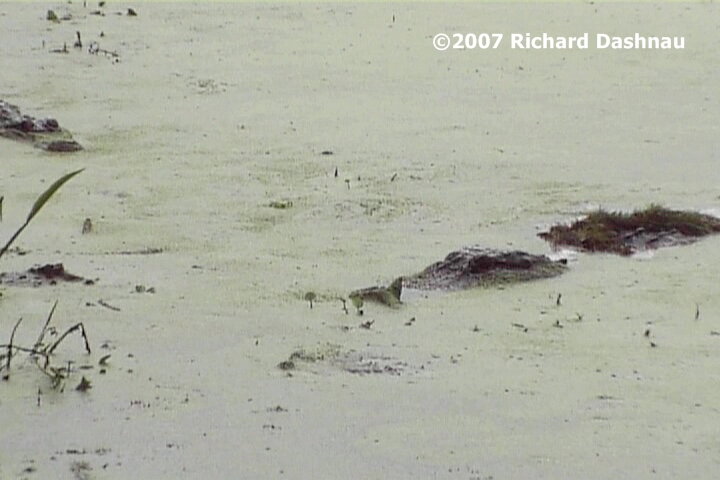 ---
---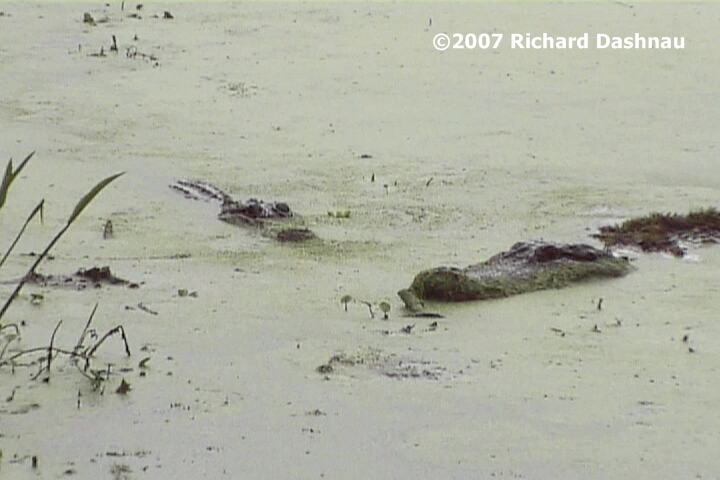
The
female
kept swimming directly towards the side of the big alligator's
snout.
As
the female got within 12 inches from the male's snout, the large
alligator
raised its back again. When the female got to touching
distance, the larger
raised its head, and gently rested its chin on the female's snout.
Then
it slowly pushed forward--pushing the female's head from the side
with
his lower jaw. It moved forward more until the center
of its lower jaw
was on the back of the female's skull. The larger began the
bobbing
motion
characteristic of a bellow. As it did, it moved forward until its
chest
was over the female's back (the two bodies were
nearly perpendicular to
each other). Then it pushed down--possibly standing on the female
with
its forelegs--and began bellowing.
-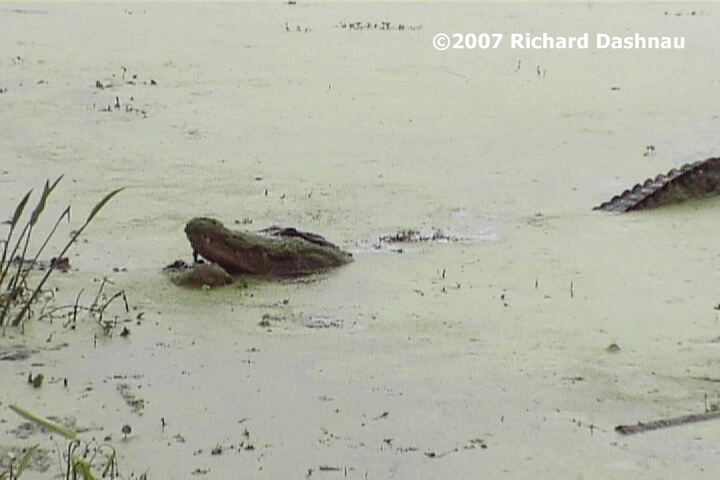 --
--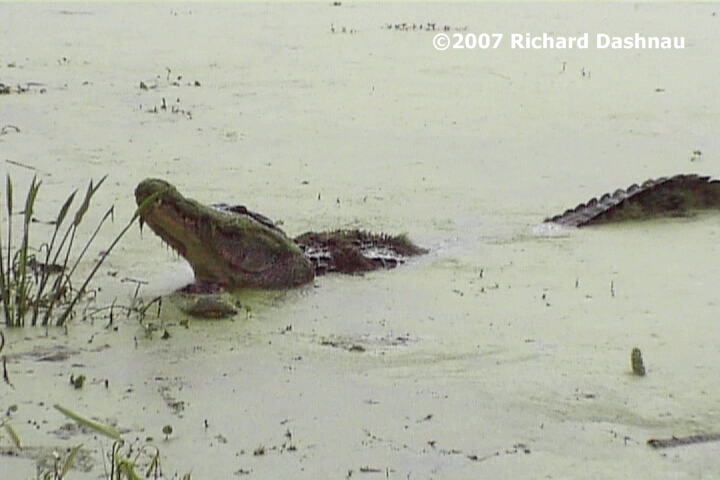 --
--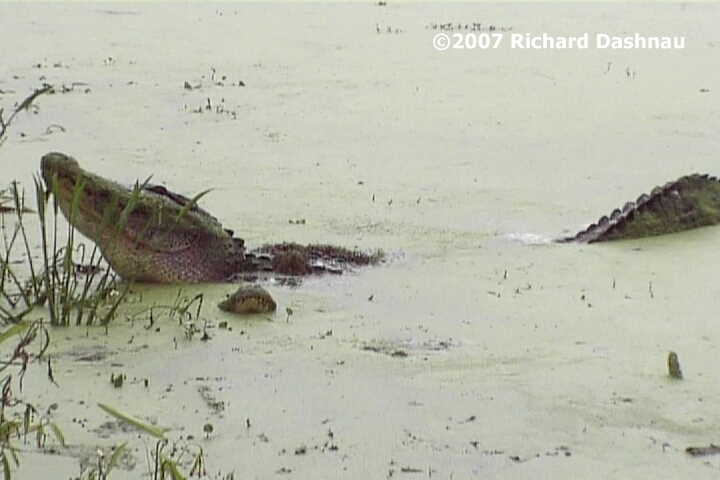 -
-
-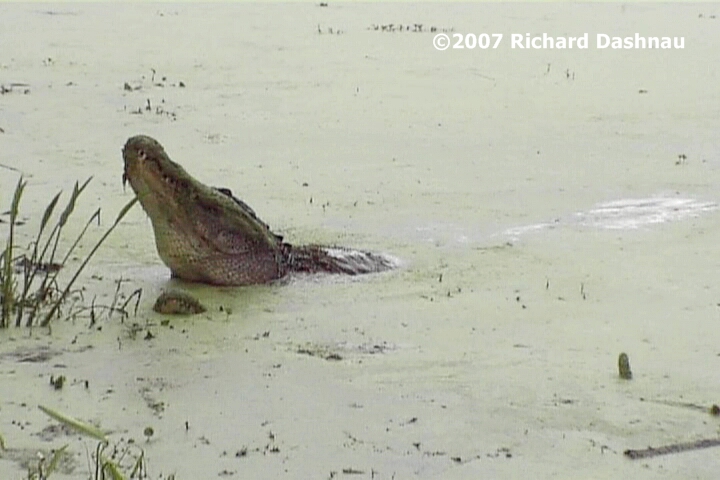 --
--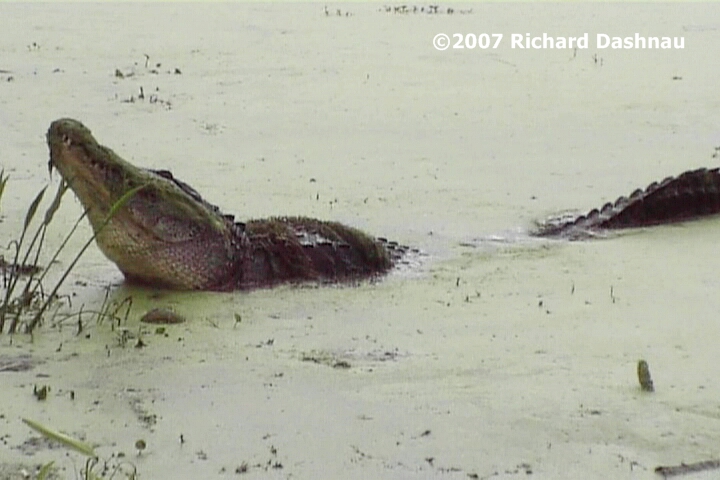 --
--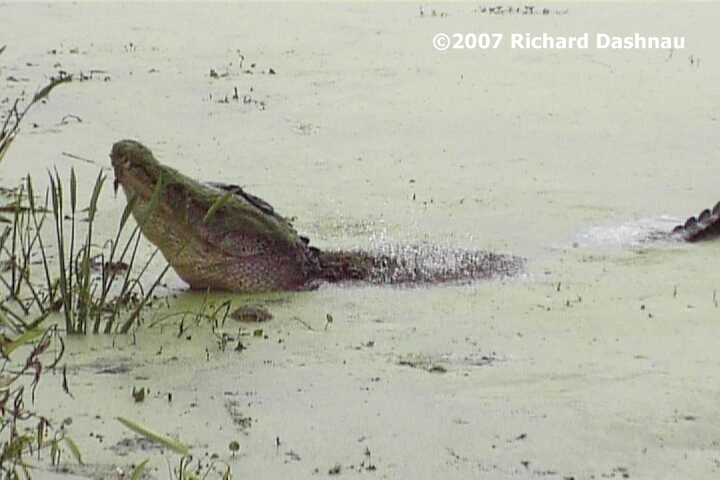
During
the bellow, all but the tip of the female's snout was left visible
at
the
surface of the water. She remained motionless. That is, she didn't
try
to escape from under the male alligator. The male bellowed 3 more
times,
with the bobbing. During all the motion, the female's nose was
also
briefly
pushed under the water. After the last bellow, the male relaxed,
although
his mouth opened in a narrow gape. This is all shown in
the
11 minute video
clip(mp4).
--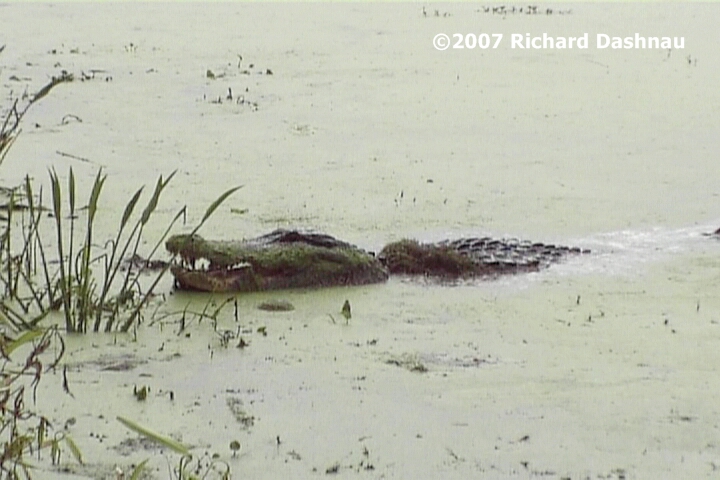
As
the
bottom of his closed jaws slowly lowered into the water, a brief
spurt
of bubbles was expelled from the female's snout. These broke the
surface
about 4 inches from the male's head. Her snout broke
the
surface,
submerged, and then a stream of bubbles broke the surface of the
water,
making it appear that she might have been moving her head from
side to
side. Slight movements of the male alligator indicated
that the female
was probably changing position slightly. 6 Further streams of
bubbles
appeared,
without the female surfacing in between. There was a pause of 4-10
seconds
between each burst of bubbles. After
the last stream, there was a pause
of about 10 seconds and the female's head surfaced as she
apparently
had
pulled it out from under the male. Her head was covered with
mud
and plant matter, so apparently
she had been pushed into the lake bottom.
Movement during all of this was very slow.
--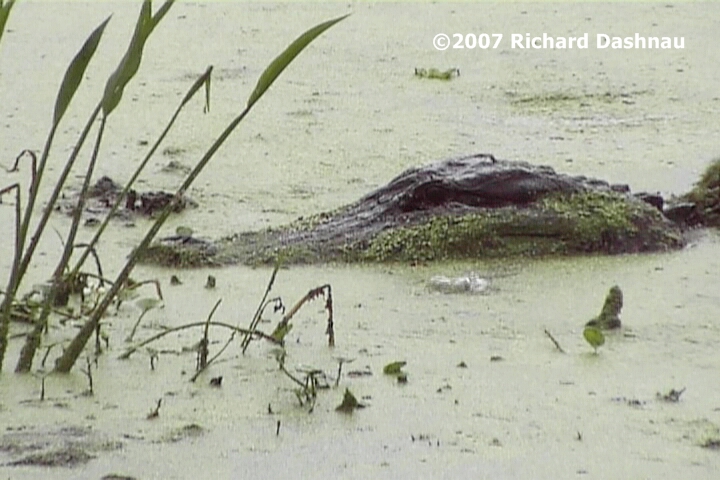 --
--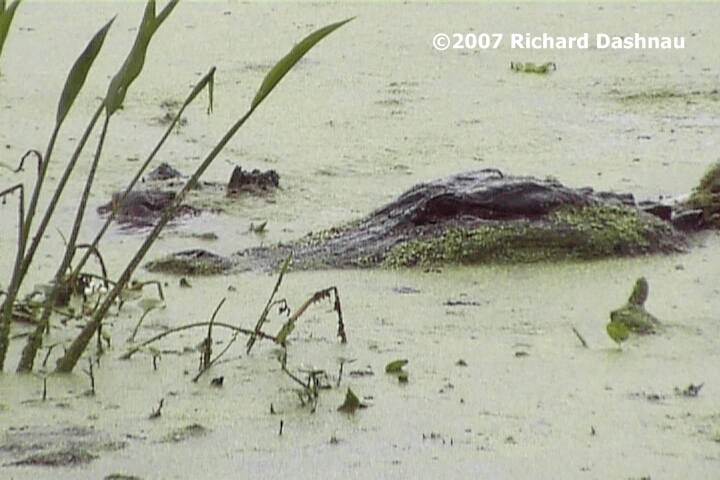 --
--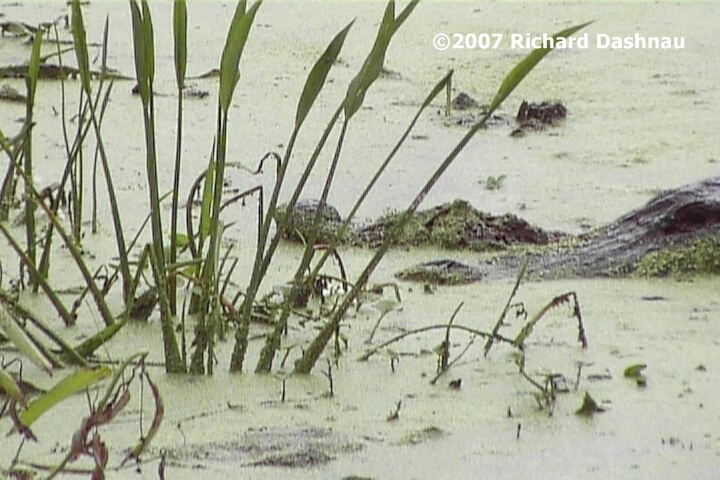 -
-
-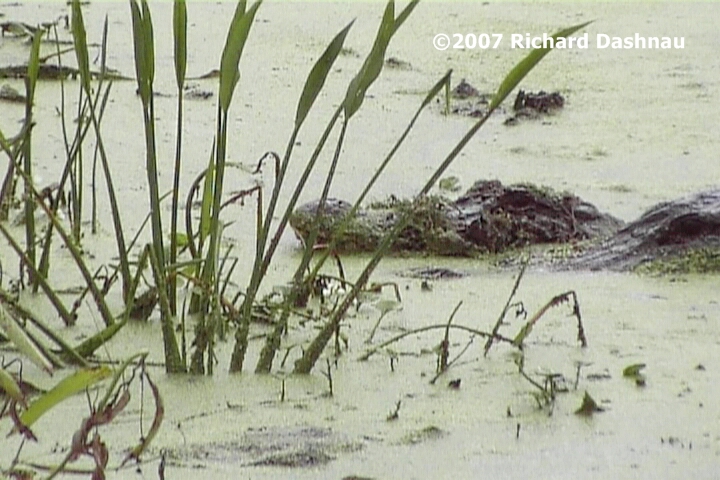 --
--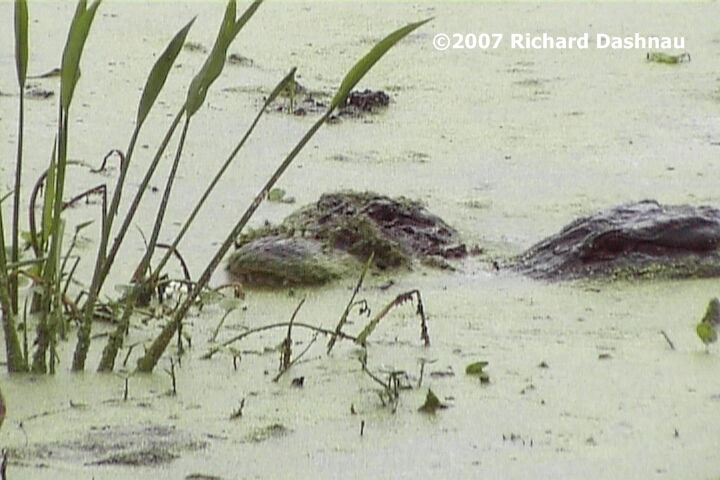
The
female shifted forward with the base of her lower jaw pressing
against
the nose of the male. She pushed hard enough to shift the male
back a
couple
inches. Then, she lifted her snout and placed it atop the
male's. Then
she pushed his snout under the water. The male did not seem
to resist
this. While his back was still high in the water, he moved
backwards
about a foot by floating and sliding out from under her
snout. The female
submerged. This is all shown in the
11
minute video
clip(mp4).
--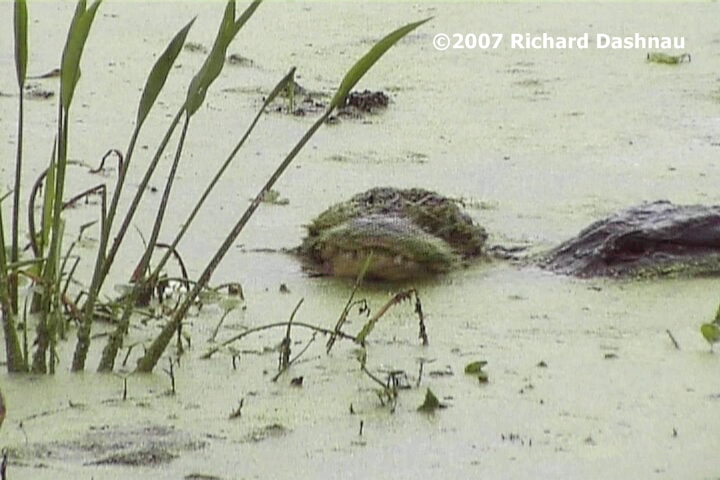 --
--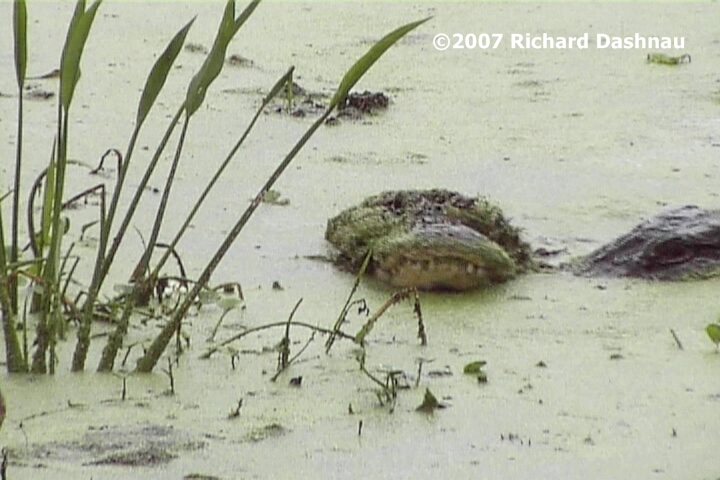 --
--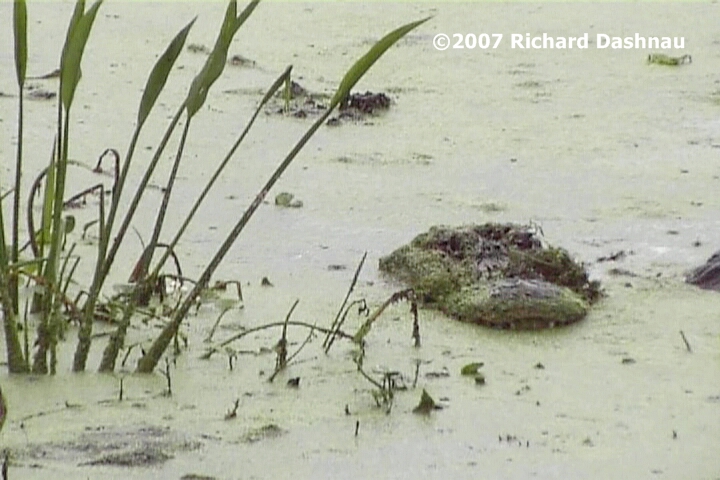 -
-
-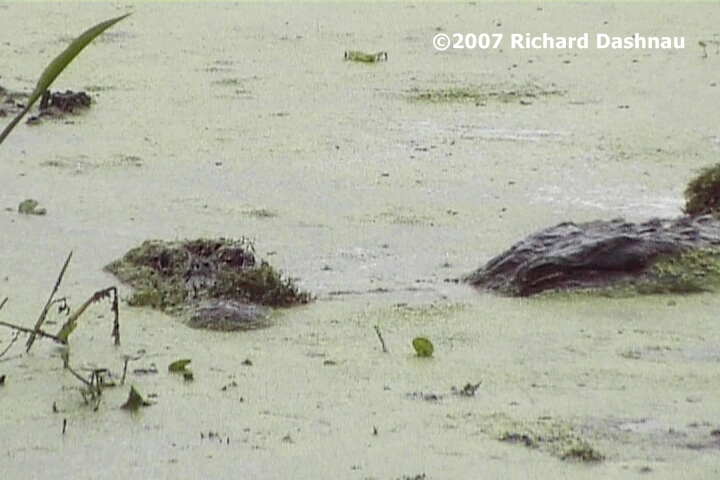 --
--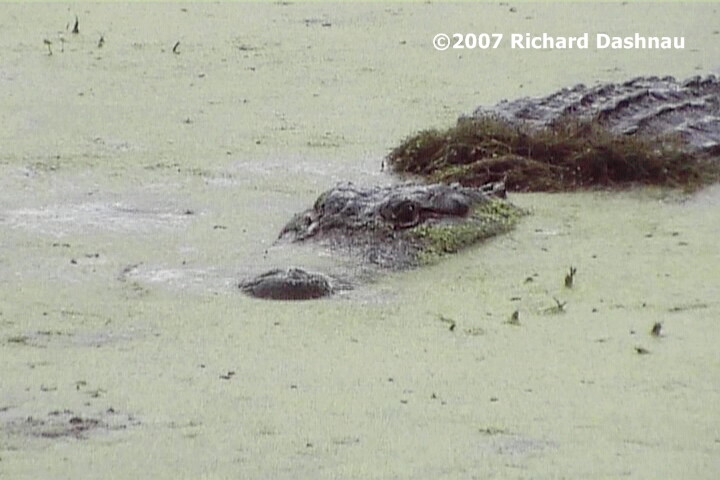 --
--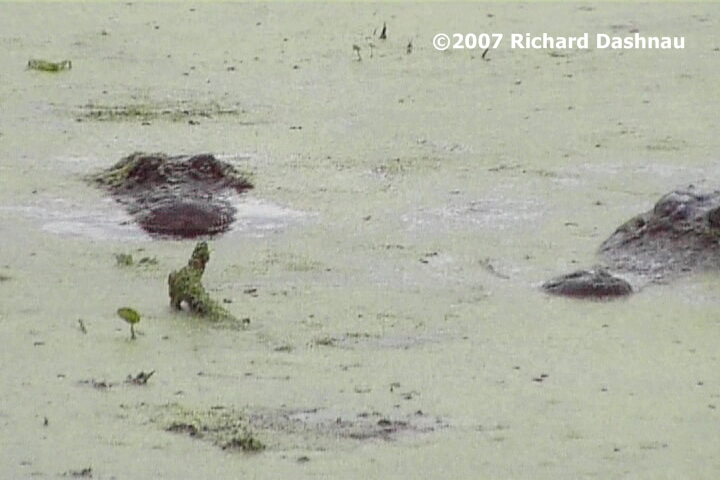
She
resurfaced
near the male's snout again, whereupon she moved towards him and
slid
her
bottom jaw, staring at the point, up over the front edge of his
snout.
She pushed, but slid off, moving forward past
the tip of his nose. She
stopped with the back of her head just past the front of his nose.
There
was a pause. She submerged again. the male's body shifted as she
contacted
it under water. She surfaced
again at the tip of his snout, with
her face pointing the other way. She'd turned around. There was
another
pause.
--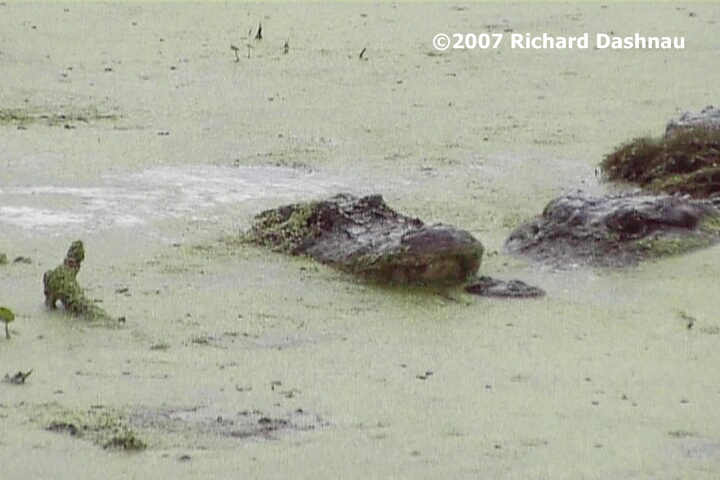 --
--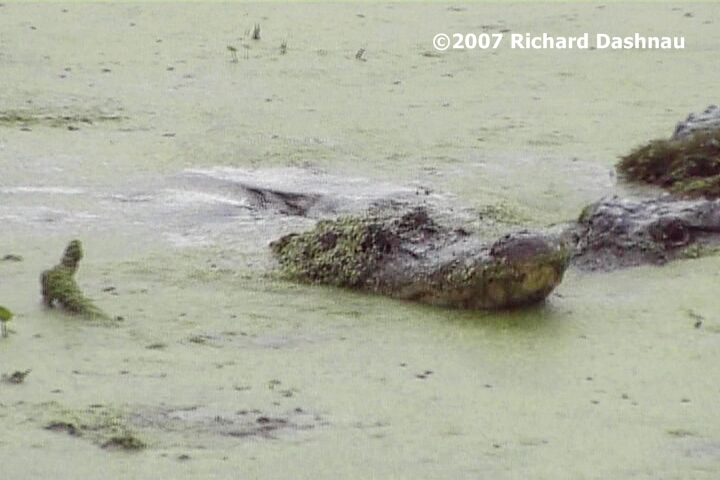 --
--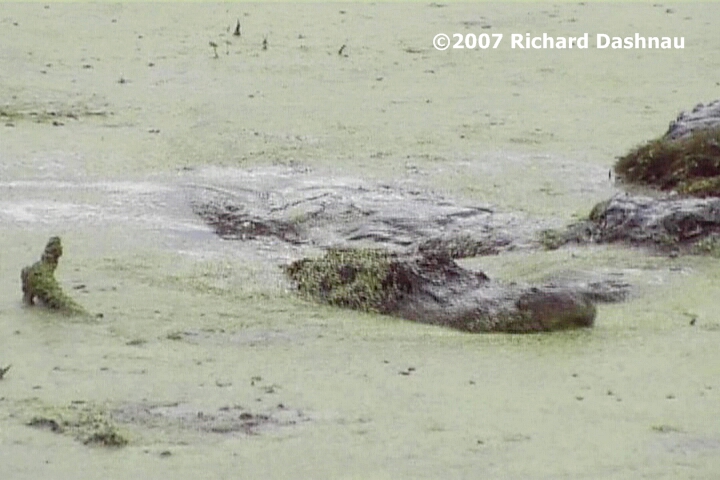 -
-
-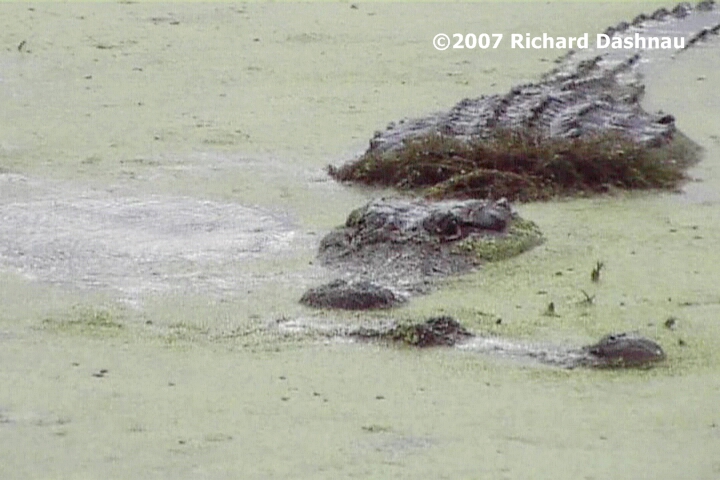 --
--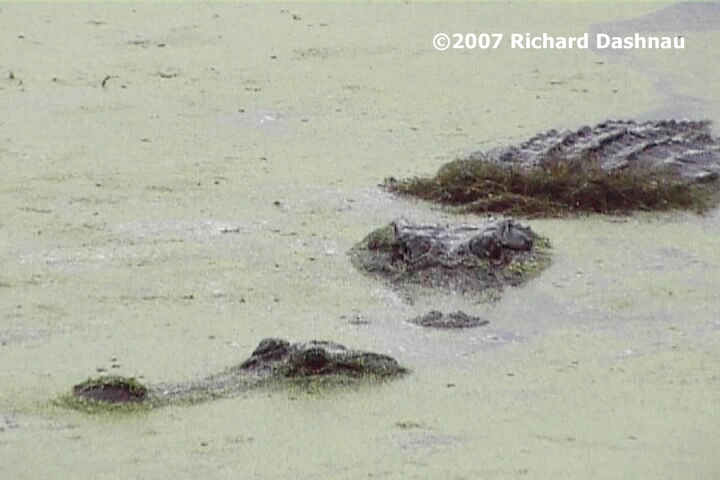 --
--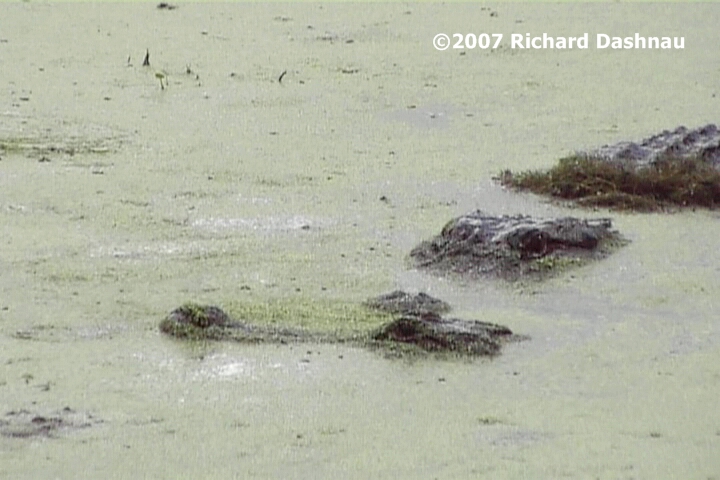
The
male turned his head slightly, and when he did, the female turned
her
head
and placed the side of her upper jaw against the tip of his nose
and
pressed
briefly. Then, after another press, she submerged. Her
head resurfaced
near the male's right leg, then she submerged again, blowing
bubbles.
This is all shown in the
11
minute video
clip(mp4).
She
streamed
more bubbles, then just the tip of her nose resurfaced, pointing
away
from
the male. The snout moved towards the male, and she pressed
against the
male with the side of her snout twice more. Her
head surfaced, pointing
away from the male. She turned towards the male, and pushed him
again,
this time using the front of her body, as her head went over his
submerged
back. After this, she submerged once
more, and reappeared close
to the bank again. This is all shown in the
11
minute video
clip(mp4).
-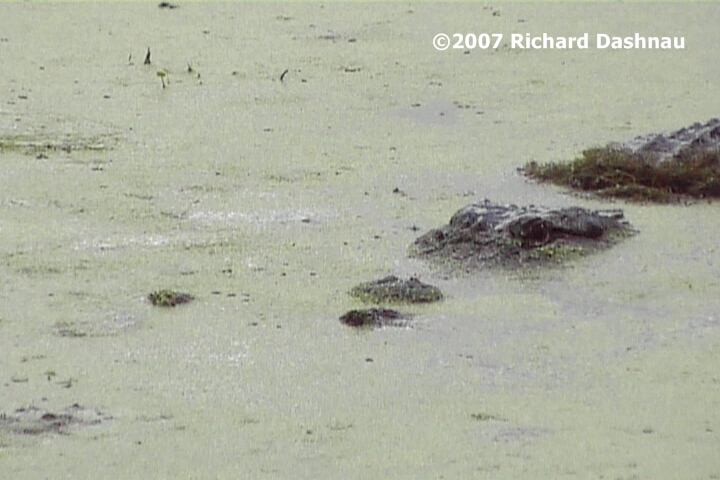 -
-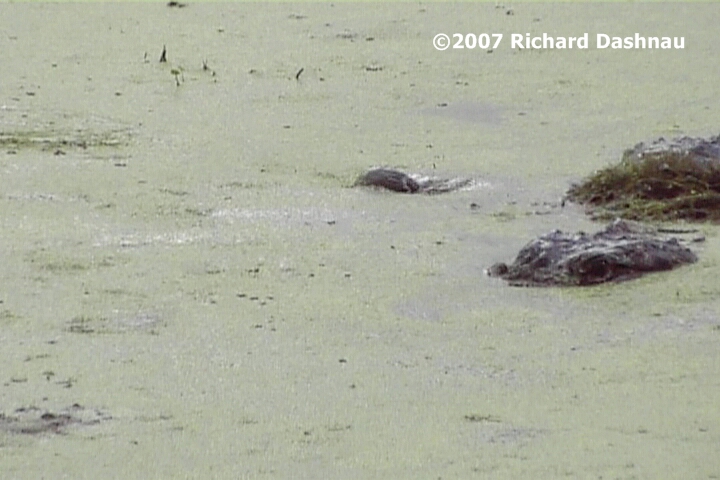 -
-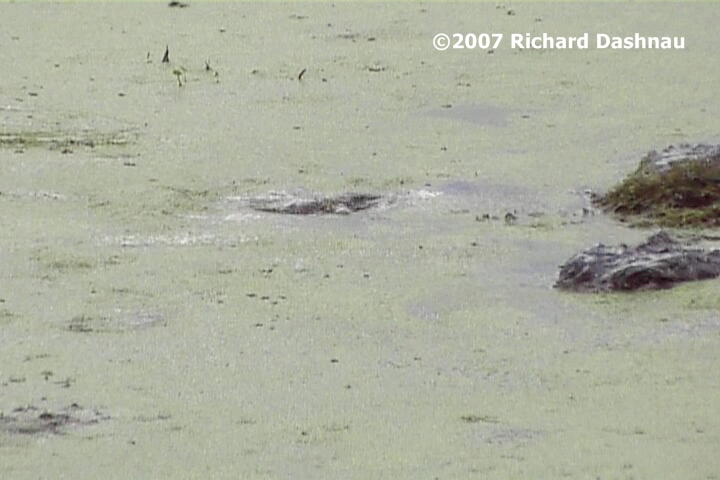 -
-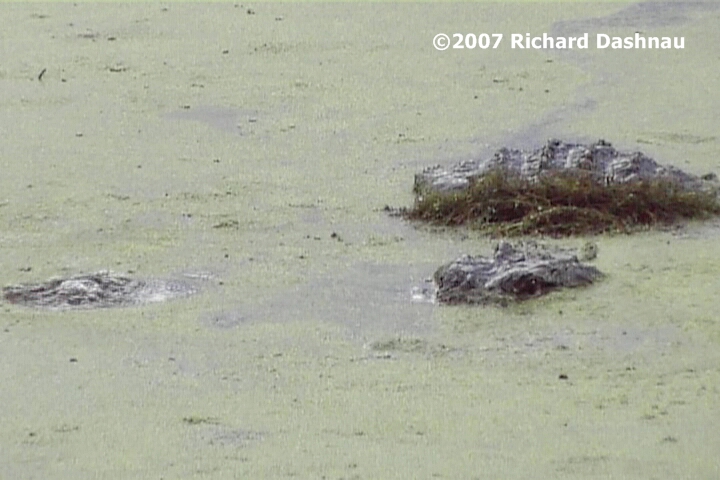
-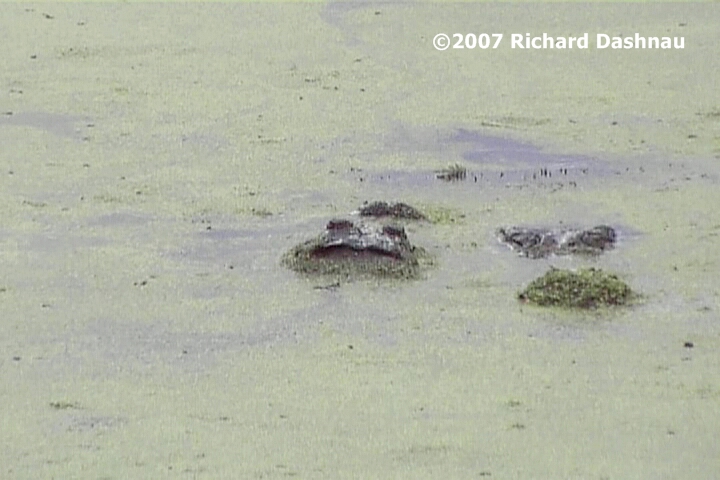 -
-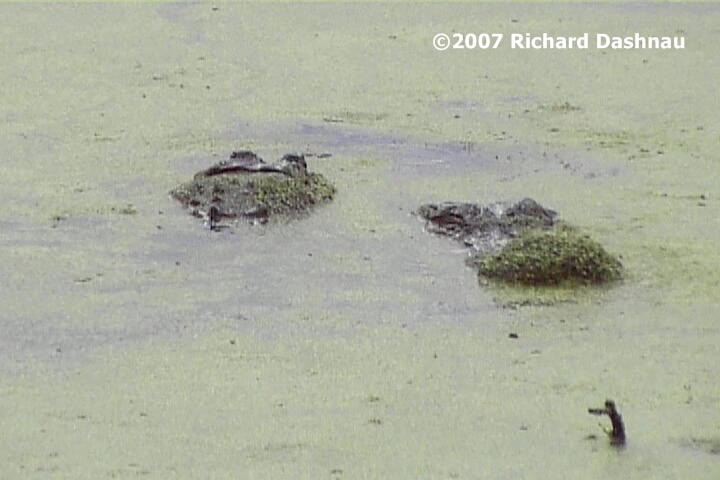 -
-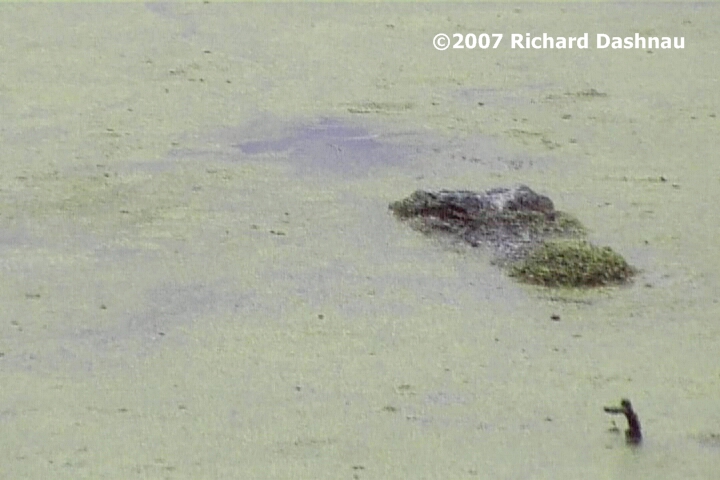
The
male remained where he was. He stayed in the vicinity, without
moving
far,
for about 30 minutes more. Then he moved off.
The
entire exchange took about 11 minutes. Although this took
relatively
little
time, many signals were broadcast and recieved by both alligators.
I
thought
the way the female approached the male was also significant.
In my experience,
female alligators will often approach a percieved threat to her
offspring
with caution and/or stealth. I feel that she is evaluating the
location
and size of the threat. If she can, she will first get
between
the threat
and the babies. Then, as in this example, she will attempt to
threaten
or push the interloper away. This is far from most peoples'
perception
of the fierce female alligator protecting her young. Rather
than
wasting
energy and exposing herself to possible harm by rushing noisily at
an
intruder
(which at first may seem to be the obvious plan), she saves her
energy
and prevents possible injury by advancing slowly. In this
particular case,
advancing quickly towards what might be a dominant, larger male
might
have
cause her severe injury or death.
As
soon
as she advanced, the male pushed her snout under water and
bellowed.
Both
of these are ways to assert dominance. The female submitted to
this.
However,
after the submission, she stayed near the male and--by performing
movements
associated with mating behavior--began to assert her
needs upon
the male. She pushed on the male, but from a submissive position.
By
using
her snout against the male's snout, and then later against his
body,
she
eventually succeeded in pushing the male away from
the shore.
I
have
been able to read some studies of alligator social signals,
particularly:
Courtship
Behavior of American Alligators, by Kent A. Vliet, Ph.
D.--in
pages
383-408 of Crocodilian Biology and Evolution edited
by
Gordon C.
Grigg, Frank Seebacher, and Craig E. Franklin; Pub. Feb 2001. ; Social
Displays
of the American Alligator by Kent A. Vliet in Amer.
Zool.,
29:1019-1031 (1989); Social Signals of Adult
American
Alligators
by Garrick, Lang, and Herzog in the Bulletin of the American
Museum of
Natural History Vol. 160:Article 3 1978. Reading these works
has
allowed me cross reference some of these behaviors. Sometimes
there is
mention of "blowing bubbles" in a social context, but without any
clear
suggestion as to any meaning. Considering that alligators can
sense
pressure
waves via the sensory dots on their snouts, then the
"burbling" of the
water caused by a stream of bubbles would probably be sensed by
the
alligator.
In this instance, the female may have been indicating her position
or
acknowledging
the male's position (directly over
her) by blowing the streams of bubbles.
The
head of the alligator--particularly the edges of the jaws--are
used for
gentle physical contact during mating, with the edges of the jaws
of
one
alligator used to touch various
parts of the head and neck of the other
alligator. Sometimes these touches can escalate into "pressing"
movements
which can be a demonstration or test of strength. During mating,
these
behaviors can lead to the
reproductive act. Here, though, the mating season
was long over.
It
seems
to me that either the female was using mating behavior to allow
her to
approach the male; or that the observed actions are part of a
broader
scheme
of communication and that some of the signals also happen to be
used
during
courtship.
Alligators,
although they may seem to move slowly most of the time, can show a
wide
range of communication if one
has the patience to view their world in "alligator
time".
And, this page shows alligators at the park, on land, near various landmarks at the park.
Go back to my main alligator page, Alligators
Go
back to my home page, Welcome
to rickubis.com
Go
back to the See
the World
page.